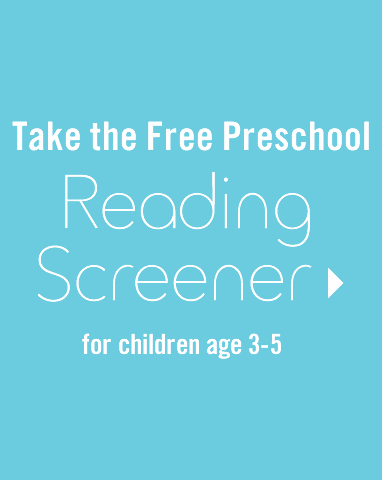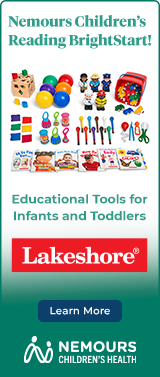Hop on down to the cutest show in town – The Bunny Rabbit Show! This sturdy board book is perfect for little hands and features an energetic chorus-line of ten terrific rabbits, singing and hopping their way into your child’s imagination.
Before, During and After Reading
Oral Language
Introduce the story by reading the title, The Bunny Rabbit Show! Bring attention to the bunny rabbits that are seen through the oval cut-out on the front cover. Talk to your child about the bunny rabbits’ features, like their long ears, round noses, and hopping feet.
Play a quick game of peek-a-boo with your child using the oval cut-out on the front cover of the book.
For example, you might open the front cover, place the oval cut-out in front of your face, and say:
Peek-a-boo! I see you!
Encourage your child to look through the oval cut-out and peek at you. You might even change the title to include your child’s name by saying:
It’s the [Child’s Name] Show!
Phonological Awareness
Expose your child to the assortment of speech sounds and rhythmical verses that are featured throughout the book. Try using different tones of voice to make clear distinctions between the characters, like the bunny announcer and the bunny choral singers.
Engage your child in sound play as you’re reading and singing the text. After reading the pages that have the words “ten terrific rabbits,” bring your child’s attention to the /t/ sound at the beginning of ten and terrific.
For example, you might ask:
How many rabbits do you see? Let’s count them!
Invite your child to count each rabbit along with you as you point to each rabbit.
Then you might say:
Ten! There are /t/ /t/ ten /t/ /t/ terrific rabbits!
Encourage your child to say /t/ /t/ ten along with you! You might even continue by saying:
Now, let’s look for some bunny /t/ /t/ tails!
Oral Language
Sharing this book with your child will expose her to many new vocabulary words, which is important for the development of oral language.
As you read the story, introduce your child to the word audience. Try to give her a child-friendly definition of the word, using the pictures in the book to help her understand the concept. For example, while pointing to the back of the red chairs pictured in the book, you might say:
The audience is everyone who is watching the bunny rabbit show.
You might also introduce the concept words front and back to your child. Pointing to the picture of the bunnies facing you, you might say:
This is the front of the bunnies. We can see their eyes and their noses!
Next, pointing to the back of the red audience chairs pictured, you might say:
I wonder who is sitting in the red chairs in the audience. We can only see the backs of their heads!
Encourage your child to guess the animals that are watching the Bunny Rabbit Show by looking at the back of their heads. Then, turn the page and have fun naming all of the animals in the audience!
On the final page of the story, bring your child’s attention to the word applause that is printed at the top of the page. Talk about the meaning of the word applause and demonstrate how we create applause when we like something by clapping our hands. For example, you could say:
When we really, really like something, we make applause by clapping our hands like this (clap your hands, demonstrating applause).
Encourage your child to applaud or clap for the fanfare of animals at the end of the storybook!
Oral Language
Invite your child to put on her own Bunny Rabbit Show! Join in on the fun, just like Pig, Chicken, and Sheep did in the story. Hop, dance and sing together to the beat of some lively music.
Beginning Writing
Help your child make her own Bunny Ears.
Gather the following materials:
- 3-4 sheets of heavy construction paper or cardstock
- Crayons or markers
- Child-safe scissors
- Tape
Step 1: Make a 3 inch wide strip of paper that is long enough to go around your child’s head (about 12 -18 inches long). You might need to tape a couple of strips together in order to make it long enough.
Step 2: Draw 2 elongated ovals on a remainder sheet of cardstock for the ears.
Step 3: Invite your child to decorate the ears using crayons or markers.
Step 4: Cut out the ears with safety scissors.
Step 5: Tape the ears to the strip of paper. Tape the strip in a loop so that it fits around your child’s head.
Step 6: Place the Bunny Ears on your child’s head and encourage her to hop like a bunny rabbit!
Explore more recommended children's books for two-year-olds, or find an at-home activity to help build important pre-reading skills.








